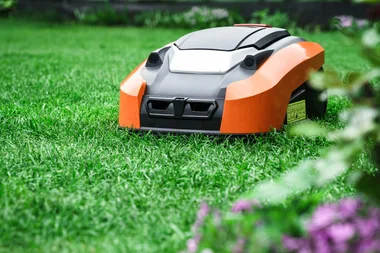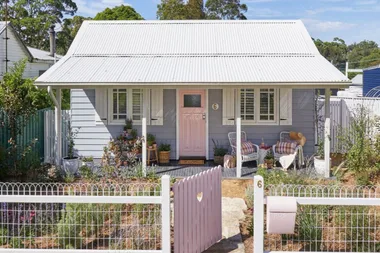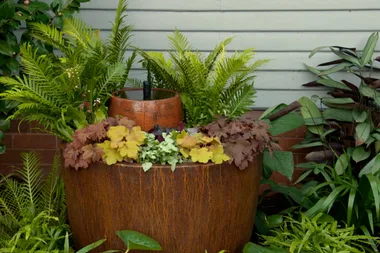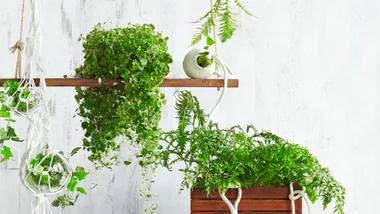Also known as Persian or florist’s cyclamen, Cyclamen persicum are commonly grown as potted colour, placed into decorative containers or baskets for indoor decoration – but they also grow well in covered outdoor environments like balconies and patios.
How to grow cyclamen indoors
Sun
Most often grown in pots indoors, cyclamen like plenty of natural light. Put in a well-lit, cool but draught- free spot – preferably with an hour or two of sunlight each morning, although no strong sunlight. This also applies to plants on patios, decks and verandahs.
Soil
They are sensitive to rot, so the aim is to wet the soil, not the flowers or foliage. There are two ways of doing this: either water carefully with a long- spout watering can or when required, place the pot on a saucer and let it soak the water up from the base. Do not over-water as they often3benefit from a short dry spell.
Temperature
The plants dislike being in hot, stuffy rooms, so take your indoor cyclamen outside at night 4to a well-ventilated area.
During summer, most species are dormant. To keep your potted plants for next year, move them outside to a shady spot in the garden with the pots placed on their sides to avoid rot. When they start to show signs of new growth in late summer you can5replant them into new pots.
Feeding
Cyclamen don’t require a lot of feeding but to keep them flowering for as long as possible, give them an occasional feed with a soluble fertiliser such as Thrive Flower & Fruit.

How to grow cyclamen outdoors
Smaller species of 6 cyclamen, such as Cyclamen hederifolium, can be grown outdoors – they occur naturally in parts of Europe and the Mediterranean.
Plant beneath deciduous trees where they’ll enjoy summer shade and winter sunlight. They also look fabulous in rockeries with a little overhead protection in summer. They’ll cope with frost and heat, with adequate watering in summer. The flowers are pink, lilac or white and the foliage is patterned and marbled.
Cyclamen hederifolium are forest-floor plants so plant them in the shade of deciduous trees for a lovely seasonal colour splash. Cyclamen flowers actually nod, but the petals flare out and upwards as they expand. Some offer two-tone blooms, like this.

What can go wrong
Cyclamen growing indoors are susceptible to botrytis (also referred to as grey mould), which occurs when the plant is kept in humid conditions. To prevent it, spray with a fungicide and remove dead leaves and flowers. Water carefully (see How to grow cyclamen indoors, page 40).
If you notice the leaves puckering or curling, it could be a sign of mites, in which case spray with an insecticide that targets insects and mites.
When your plant has finished flowering, the stems will coil up and can be removed along with yellowed leaves and spent flower heads. Take care to remove the stem by pinching and twisting gently so as to not damage the core.
You may also like
The best indoor plants that mum will love
How to make beautiful flower pots at home
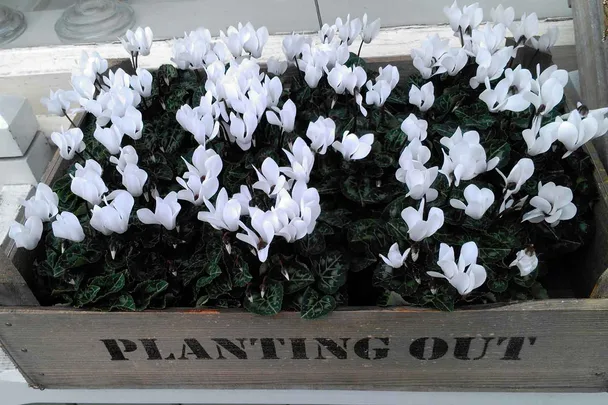 Getty Images
Getty Images
